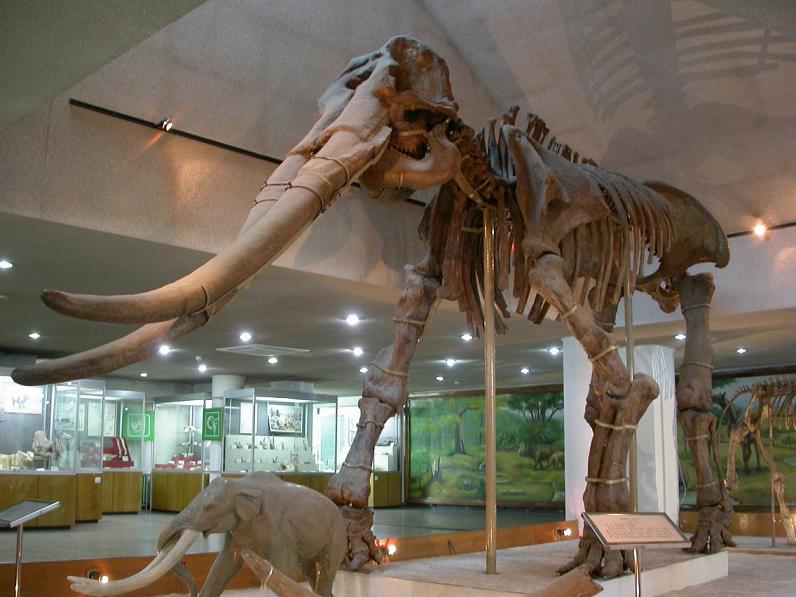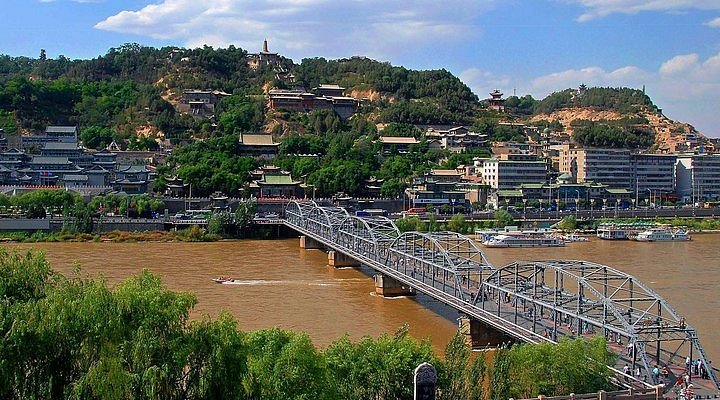Gansu Provincial Museum: Where Ancient Artifacts Meet Modern Exhibits

An Essential Guide to Visiting Gansu Provincial Museum
Nestled in the heart of Lanzhou, the Gansu Provincial Museum is a hidden gem that offers an enchanting glimpse into the rich tapestry of Chinese history and culture. As the capital of Gansu Province, Lanzhou serves as a vibrant backdrop for this impressive institution, which showcases a diverse array of artifacts that span over 5,000 years of human civilization. From the breathtaking beauty of Buddhist art to the intricate relics of the Silk Road, the museum is a treasure trove that invites visitors to embark on a journey through time.
One of the museum’s standout exhibits is the renowned bronze galloping horse, affectionately nicknamed the “Flying Horse of Gansu.” This exquisite piece embodies the craftsmanship and artistic prowess of ancient Chinese artisans, captivating all who lay eyes on it. The museum’s collection is not limited to just this iconic artifact; it also features stunning sculptures, painted pottery, and an impressive focus on the prehistoric cultures that once thrived in Northwest China.
For international travelers, the Gansu Provincial Museum is not just a place to view exhibits; it is an opportunity to immerse oneself in the cultural legacy of a region that has played a crucial role in the history of trade and cultural exchange along the Silk Road. With a visitor-friendly layout and informative displays available in both Chinese and English, the museum makes it easy for everyone to appreciate the diverse stories that its collections tell.
Open from 9:00 AM to 5:00 PM, the museum is easily accessible via public transport, with several bus routes and metro options available. So, whether you’re an art enthusiast, a history buff, or simply curious about the past, a visit to the Gansu Provincial Museum promises to be a memorable highlight of your journey through Lanzhou. Prepare to be inspired and educated as you explore this remarkable repository of history and art.
In This Guide
- An Essential Guide to Visiting Gansu Provincial Museum
- The Rich History and Legends of Gansu Provincial Museum
- Main Highlights: What You Absolutely Can’t Miss
- Planning Your Visit: A Practical Guide
- Tickets: Prices, Booking, and Tips
- How to Get There: A Complete Transportation Guide
- Local Cuisine and Accommodation Nearby
- Frequently Asked Questions
- Final Thoughts on Your Trip
The Rich History and Legends of Gansu Provincial Museum
Nestled in the heart of Lanzhou, the Gansu Provincial Museum is not just a repository of artifacts; it is a vibrant narrative of the rich tapestry that is Gansu’s history. This museum stands as a testament to the region’s pivotal role in the development of Chinese civilization, intricately linked to the legendary Silk Road.
The museum’s origins date back to 1956 when it was established to preserve and showcase the diverse cultural heritage of Gansu Province. Over the decades, it has evolved into a premier institution that houses over 300,000 artifacts, ranging from ancient fossils to exquisite bronze relics. Among its most celebrated treasures is the famed “Flying Horse of Gansu,” a bronze statue that symbolizes the artistic mastery of the Han Dynasty and serves as a poignant reminder of the region’s historical significance as a cultural crossroads.
As visitors stroll through the museum’s halls, they encounter a myriad of exhibits that reflect Gansu’s multifaceted history. The museum features remarkable displays of Buddhist art, including intricate sculptures and murals that capture the spiritual essence of the region. These artworks are not merely decorative but are steeped in the legends of the ancient trade routes that once thrived here, connecting East and West.
Moreover, the museum offers insights into the prehistoric cultures that flourished in Gansu, revealing the lives of early inhabitants through painted pottery and tools. The emphasis on paleontology showcases the region’s rich geological history, with displays of dinosaur fossils unearthed from the nearby areas.
The Gansu Provincial Museum also serves as a cultural hub, hosting various educational programs and exhibitions that engage both locals and international travelers. Its commitment to preserving the region’s heritage is palpable in the thoughtful curation of its collections, each piece telling a story that transcends time.
In summary, the Gansu Provincial Museum is more than a mere collection of artifacts; it is a living chronicle of the region’s history and legends. For those traversing the path of the Silk Road or exploring the depth of Chinese civilization, this museum offers an unparalleled glimpse into the past, making it a must-visit destination for any traveler eager to understand the profound legacy of Gansu Province.

Gansu Provincial Museum.
Main Highlights: What You Absolutely Can’t Miss
The Gansu Provincial Museum is a must-visit destination for anyone exploring Lanzhou and the rich tapestry of Gansu Province’s history. With a collection that spans thousands of years, this museum offers a window into the region’s cultural heritage and significant historical milestones. Here are the main highlights you absolutely can’t miss:
1. The Bronze Galloping Horse
One of the museum’s star attractions is undoubtedly the Flying Horse of Gansu, a stunning bronze sculpture that dates back to the Han Dynasty. This iconic piece, which depicts a horse in mid-gallop, is not only a national treasure but also a symbol of the region’s historical significance along the Silk Road. Be sure to take a moment to appreciate its intricate details and the craftsmanship that has allowed it to endure through the centuries.
2. Buddhist Art Exhibition
Immerse yourself in the profound beauty of Buddhist art showcased throughout the museum. The exhibition features exceptional sculptures and murals that reflect the spiritual and artistic influences of Buddhism in the region. These works offer insight into the religious practices and artistic traditions that flourished in Gansu, making it a highlight for art lovers and history enthusiasts alike.
3. Dinosaur Fossils and Northwest China’s Paleontology
Gansu is renowned for its rich paleontological heritage, and the museum’s collection includes fascinating dinosaur fossils from the region. This exhibit is particularly engaging for families and children, providing an exciting glimpse into the prehistoric creatures that once roamed Northwest China. The well-curated displays make it accessible to visitors of all ages.
4. Silk Road Relics
No visit to Gansu Provincial Museum would be complete without exploring its extensive collection of Silk Road artifacts. As a historical crossroads of trade and cultural exchange, Gansu played a vital role in the Silk Road network. The exhibits highlight various relics, showcasing the diverse cultures and influences that converged in this region.
5. Painted Pottery and Prehistoric Culture
The museum also offers a unique look into the prehistoric cultures of Gansu through its impressive collection of painted pottery. These artifacts not only reveal the artistic styles of ancient civilizations but also provide context about their daily lives and traditions.
6. Comprehensive English Explanations
For international travelers, the museum provides comprehensive English descriptions alongside its exhibits, making it easier to understand the significance of each piece. While audio guides may not be widely available in English, the written explanations are clear and informative, ensuring you won’t miss out on the rich narratives behind the artifacts.
Practical Tips
- Opening Hours: The museum is open from 9:00 AM to 5:00 PM, Tuesday through Sunday, making it easy to fit into your travel itinerary.
- Getting There: Conveniently located in Lanzhou, the museum is accessible via several bus routes and the metro, ensuring a hassle-free visit.
Whether you’re an avid history buff, an art enthusiast, or simply curious about the region’s past, the Gansu Provincial Museum promises an enriching experience that celebrates the vibrant history and culture of Gansu Province.

Gansu Provincial Museum.
Planning Your Visit: A Practical Guide
Visiting the Gansu Provincial Museum is an enriching experience that offers a glimpse into the profound history and culture of Gansu Province. Here’s a practical guide to help you navigate your visit and make the most of your time at this remarkable institution.
Museum Overview
The Gansu Provincial Museum, situated in Lanzhou, is renowned for its extensive collection of artifacts, which includes relics from prehistoric cultures, exquisite Buddhist art, and significant pieces related to the Silk Road. Among its most notable exhibits is the “Flying Horse of Gansu,” a bronze statue that has become a symbol of the province’s rich cultural heritage.
Opening Hours
The museum is open to visitors from 9:00 AM to 5:00 PM from Thursday to Tuesday. It remains closed on Wednesdays. To ensure you have ample time to explore, consider arriving early in the day.
Admission
Entry to the Gansu Provincial Museum is generally free, but it’s advisable to check for any special exhibitions that may require a ticket.
Getting There
- Public Transport: The museum is easily accessible via public transportation. You can take Bus No. 1, 6, or 102 directly to the museum. Buses in Lanzhou are frequent and provide a reliable option to reach your destination.
- Metro: If you prefer the metro, take the Lanzhou Metro Line 1 and disembark at the nearest station, followed by a short walk to the museum.
Facilities
The museum is equipped with essential visitor facilities, including restrooms and a café. While food options within the museum may be limited, there are several restaurants nearby where you can enjoy local cuisine.
Audio Guides
Currently, audio guides are only available in Chinese, which might be a drawback for international visitors. However, comprehensive written explanations are provided in both Chinese and English throughout the exhibits, allowing you to gain insight into the artifacts.
What to See
Plan to spend at least two to three hours exploring the museum. Highlights include:
– Buddhist Art Exhibition: Admire intricate sculptures and murals that showcase the beauty of religious art.
– Silk Road Artifacts: Discover items that tell the story of the Silk Road and its significance in connecting cultures.
– Dinosaur Exhibits: Learn about the prehistoric life in Northwest China with fascinating displays of dinosaur fossils.
Nearby Attractions
After your visit, consider exploring other attractions in Lanzhou, such as:
– White Pagoda Mountain: A scenic spot offering panoramic views of the city.
– Lanzhou Shuiche Park: A peaceful park perfect for a leisurely stroll.
– Iron Bridge of the Yellow River: An iconic landmark that is a short distance away from the museum.
Dining Options
For a taste of local cuisine, you can find numerous restaurants within a few miles of the museum. Whether you’re craving hot pot, traditional Chinese dishes, or quick bites, there’s something to satisfy every palate.
Tips for Your Visit
- Arrive early to avoid crowds, especially on weekends.
- Wear comfortable shoes, as you will likely be doing a lot of walking.
- Take your time to enjoy the exhibits and don’t hesitate to ask museum staff for assistance or information.
With its rich collection and welcoming atmosphere, the Gansu Provincial Museum is a must-visit for anyone interested in the history and culture of this fascinating region. Enjoy your journey through time!

Gansu Provincial Museum.
Tickets: Prices, Booking, and Tips
Visiting the Gansu Provincial Museum is a must for anyone exploring Lanzhou, offering a rich tapestry of history and culture that spans over 5,000 years. Here’s what you need to know about tickets, pricing, and tips for a seamless experience.
Ticket Information
Admission Fee: The museum is free to enter, making it accessible for all visitors. However, it’s recommended to check for any special exhibitions that might require a ticket or reservation.
Audio Guides: While the museum offers comprehensive written explanations in both Chinese and English, audio guides are reportedly only available for download within China. This might be disappointing for international travelers, so consider preparing a brief overview of the exhibits you want to explore.
Hours of Operation
The Gansu Provincial Museum is open to the public from 9:00 AM to 5:00 PM, except on Mondays when it is closed. Be sure to plan your visit accordingly to make the most of your time.
Booking Tips
-
Plan Ahead: Although entry is free, it’s wise to check the museum’s official website or local tourism platforms for any updates on exhibitions or potential closures.
-
Visit Early: To avoid crowds and fully appreciate the extensive collections, aim to arrive right at opening time or during the week, if possible.
-
Public Transport: The museum is easily accessible via multiple bus routes (e.g., Bus No. 1, 6, and 102) and the metro. Using public transport is a convenient and cost-effective way to reach the museum.
-
Allocate Time: Plan to spend at least 2-3 hours exploring the exhibits. Highlights include the beautiful Buddhist art and the iconic Flying Horse of Gansu.
-
Dining Options: Consider enjoying a meal at nearby restaurants after your museum visit. Local eateries offer a variety of traditional Chinese dishes, perfect for recharging after a day of exploration.
Final Thoughts
The Gansu Provincial Museum stands as a treasure trove of history and art, making it an enriching stop on your travels through Lanzhou. With free admission and a wealth of exhibits, it’s an opportunity you won’t want to miss. Enjoy your visit!
How to Get There: A Complete Transportation Guide
Getting to the Gansu Provincial Museum in Lanzhou is quite straightforward, thanks to the city’s well-developed public transportation system. Here’s everything you need to know to make your journey smooth and enjoyable.
Arriving by Public Transport
Buses
Lanzhou boasts an extensive bus network that is both affordable and efficient. Several bus routes will take you directly to the Gansu Provincial Museum. Notable bus lines include:
– Bus No. 1
– Bus No. 6
– Bus No. 102
Simply hop on one of these buses, and keep an eye on the stops – the museum is well-signposted, and the staff on board can assist you if needed.
Metro
For those preferring the subway, the Lanzhou Metro is a great option. You can take Line 1 and disembark at Dazhongsi Station (大中寺站). From here, it’s approximately a 15-minute walk to the museum. Look for signs directing you toward Xijin West Road, keeping in mind that the area is pedestrian-friendly.
Taxis and Ride-Hailing Services
If you prefer a more direct route or are traveling with a group, taxis are readily available throughout the city. Just mention “Gansu Provincial Museum” (甘肃省博物馆) to your driver. Alternatively, popular ride-hailing apps are in use in Lanzhou, making it easy to book a ride at your convenience.
Walking
If you’re staying in a nearby hotel or exploring central Lanzhou, consider walking to the museum. The surrounding area is pleasant and offers a glimpse of local life. The museum is located at No. 3 Xijin West Road, Qilihe District, which is just a short stroll from several attractions and eateries.
Nearby Attractions
While you’re in the area, take advantage of your visit by exploring nearby sights such as:
– White Pagoda Mountain: A well-known local landmark offering beautiful views of the city.
– Lanzhou Shuiche Park: Perfect for a leisurely stroll or a picnic.
Accessibility
The Gansu Provincial Museum is committed to accessibility, ensuring that all visitors can enjoy its exhibits. There are facilities for those with mobility challenges, making it a welcoming destination for everyone.
Summary
Whether you choose to navigate Lanzhou’s public transport system or prefer the convenience of a taxi, reaching the Gansu Provincial Museum is easy. With its rich array of artifacts and stunning exhibitions, this museum is a must-visit for anyone exploring the region. Enjoy your journey!

Gansu Provincial Museum.
Local Cuisine and Accommodation Nearby
When visiting the Gansu Provincial Museum, you’ll want to immerse yourself not only in its rich history but also in the flavors of the local cuisine. The museum is conveniently located in Lanzhou, where you can enjoy a variety of dining options and comfortable accommodations just a stone’s throw away.
Culinary Delights in Lanzhou
- Little Sheep Hot Pot (小肥羊火锅)
- Distance: 0.2 miles from the museum
- Rating: 4.5/5
-
Experience the warmth of traditional Chinese hot pot at Little Sheep. Known for its rich broth and fresh ingredients, this restaurant is perfect for those looking to savor a communal dining experience with a variety of meats and vegetables.
-
MaZi Lu Beef Noodle (马子禄牛肉面)
- Distance: 2.7 miles from the museum
- Rating: 4.2/5
-
A must-try when in Lanzhou, this eatery specializes in the city’s famous beef noodles, made with hand-pulled noodles and tender beef in a savory broth. It’s a quick and delicious option for lunch after your museum visit.
-
HuangJiHuang Three-Sauce Simmer Pot (黄记煌三汁焖锅)
- Distance: 0.3 miles from the museum
- Rating: 4.0/5
-
Enjoy a unique simmer pot experience here, where you can select your ingredients and have them cooked in a flavorful sauce. The cozy ambiance makes it a great place to relax after exploring the museum.
-
Golden Hans (金汉斯)
- Distance: 2.5 miles from the museum
- Rating: 4.0/5
- This restaurant offers a fusion of Chinese and Western grilled dishes. It’s a great choice for those looking for a diverse menu, including grilled meats and fresh salads.
Where to Stay
- Lanzhou Legend Hotel (兰州传奇酒店)
- Distance: 1.5 miles from the museum
-
Overview: This hotel offers comfortable accommodations with modern amenities. Its convenient location makes it an ideal base for exploring Lanzhou, and the staff is known for their friendly service.
-
Hanting Hotel (汉庭酒店)
- Distance: 1.7 miles from the museum
-
Overview: A budget-friendly option, Hanting Hotel provides clean and straightforward rooms. It’s perfect for travelers who want to explore the city without breaking the bank.
-
Crowne Plaza Lanzhou (兰州皇冠假日酒店)
- Distance: 2 miles from the museum
-
Overview: For a touch of luxury, the Crowne Plaza offers elegant rooms, a fitness center, and on-site dining options. Its central location allows easy access to the museum and other attractions.
-
Ibis Lanzhou Zhangye Road (宜必思兰州张掖路酒店)
- Distance: 2.2 miles from the museum
- Overview: This hotel combines comfort with affordability. Its modern rooms and proximity to shopping areas make it a convenient choice for travelers.
Enjoy Your Visit!
With a wealth of delicious dining options and comfortable accommodations nearby, your trip to the Gansu Provincial Museum will be enriched by the local flavors and hospitality of Lanzhou. Whether you’re indulging in a hot pot dinner or resting in a cozy hotel, the experience will surely be memorable.

Gansu Provincial Museum.
Frequently Asked Questions
-
What are the opening hours of the Gansu Provincial Museum?
The museum is open from 9:00 AM to 5:00 PM, Tuesday through Sunday. It is closed on Mondays, so plan your visit accordingly to make the most of your experience. -
Is there an admission fee to enter the museum?
Entrance to the Gansu Provincial Museum is free of charge, making it an excellent option for budget-conscious travelers. However, special exhibitions may have a fee, so check in advance for any updates. -
How can I get to the Gansu Provincial Museum using public transport?
You can easily reach the museum by various public transport options. Multiple bus routes, including Bus No. 1, 6, and 102, stop near the museum. Additionally, the metro system in Lanzhou provides convenient access. -
Are there any guided tours available?
While the museum does not offer guided tours in English, there are written explanations in both Chinese and English for most exhibits. For a more in-depth experience, consider visiting with a local guide who can provide additional insights. -
What can I expect to see at the museum?
The Gansu Provincial Museum boasts a diverse collection, including prehistoric artifacts, painted pottery, Buddhist art, and items related to the Silk Road. A highlight is the famous bronze galloping horse, often referred to as the “Flying Horse of Gansu.” -
Is there an audio guide available for English-speaking visitors?
Unfortunately, the audio guide is currently only available in Chinese, which may be a drawback for non-Chinese speaking visitors. However, comprehensive written descriptions are available throughout the museum. -
Are there facilities for dining nearby?
Yes, there are several cafes and restaurants within walking distance of the museum. Whether you’re in the mood for traditional Chinese cuisine or a quick snack, you’ll find a variety of options nearby to satisfy your hunger. -
Is the museum accessible for visitors with disabilities?
The Gansu Provincial Museum is equipped with facilities to accommodate visitors with disabilities. Ramps and elevators are available to ensure that all guests can enjoy the exhibits comfortably.
Final Thoughts on Your Trip
As your journey through the Gansu Provincial Museum comes to a close, you’ll find yourself enriched by the stories woven into the fabric of its exhibits. This cultural gem in Lanzhou invites you to traverse over 5,000 years of history, from the ancient Silk Road relics to the stunning Buddhist art that reflects the region’s spiritual heritage. The museum’s well-curated collections, including the iconic Flying Horse, serve as vivid reminders of the artistic and historical significance of Gansu.
While the lack of an audio guide in multiple languages may pose a challenge for some international visitors, the extensive written information available ensures that everyone can appreciate the depth of Gansu’s legacy. As you leave, take a moment to reflect on the connections you’ve made with the past, and consider how the threads of history continue to shape the present.
Whether you’re an avid history buff or a casual traveler, the Gansu Provincial Museum offers a unique opportunity to explore the rich tapestry of Northwest China. Make sure to complement your visit with a stroll along the nearby Yellow River or enjoy a meal at one of the delightful local eateries. Each experience adds another layer to your understanding of this fascinating region. Safe travels, and may your adventures continue to inspire!